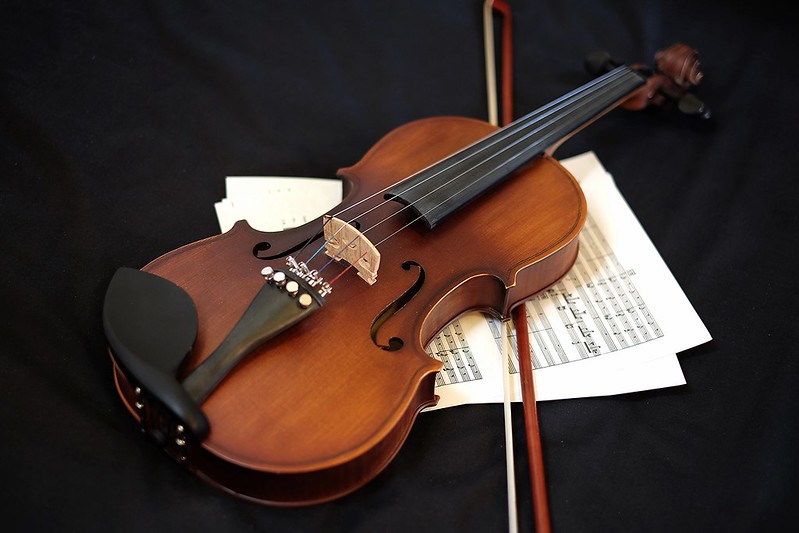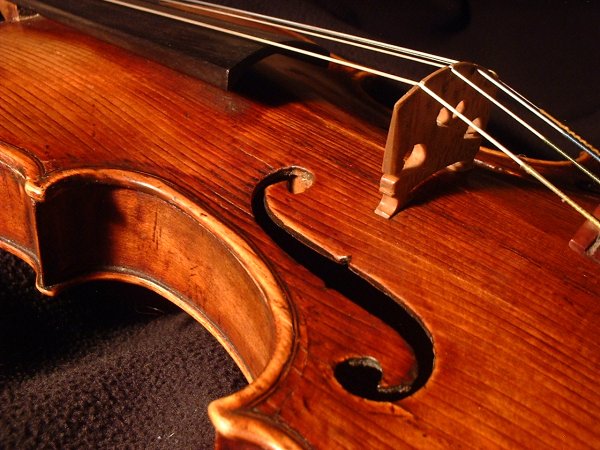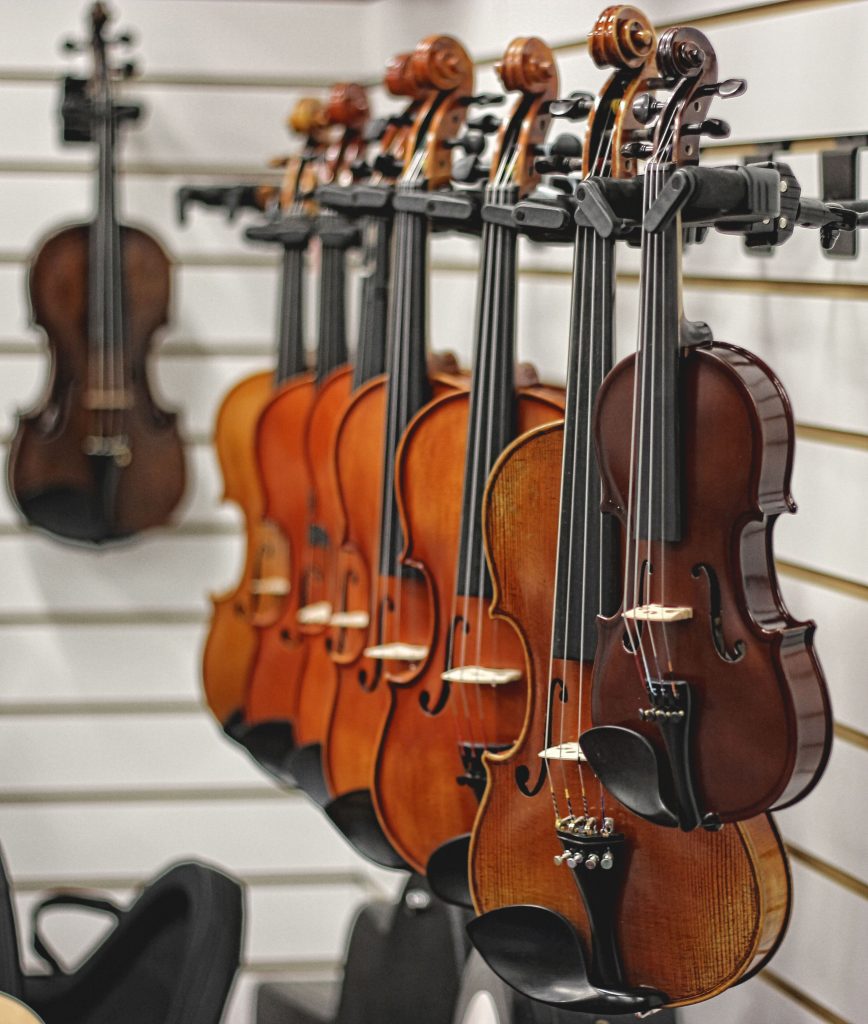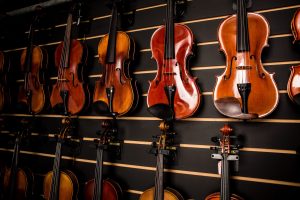
Purchasing A Violin? Myths & Warning Signs
Buying a violin can be a confusing and daunting task, especially when shopping online. Even the most experienced players struggle with choosing a new instrument.
The truth is that you don’t have to spend a fortune to get a good quality instrument. That being said, opting for the cheapest brand is not necessarily a good idea either.
A poorly made, low quality violin or fiddle will never produce a beautiful sound, even in the most experienced hands. No player wants to be let down by a bad instrument!
But how do you avoid these models?
I’ve put together this handy guide to help you navigate any potential pitfalls you may encounter along the way. Heed these warning signs and you’ll be able to make a purchase that you are 100% happy with.
With a high quality instrument in your hands you’ll be ready to take your playing to the next level in no time.
Where To Start
There are several questions you should ask yourself when buying a violin:
- What qualities should you look for in a violin?
- What makes an instrument good quality?
- What’s a good price to pay?
- What size violin do you need to buy?
- Are there any warning signs you should be aware of?
These are the most common questions people find themselves asking when in the market to buy a violin or fiddle. I’m going to answer these as best I can, to give you the knowledge you need to quell your fears.
Before we get into the specific details and characteristics of various instruments, I want to dispel a few misconceptions first. It’s important to be aware of this information so you won’t be misguided.
Common Violin Myths
The more expensive the violin, the better the quality.
This isn’t always the case. Choice of instrument is highly subjective. The tone and feel of a violin is very important. What is ‘better’ for one person may not be the case for another. In other words, it’s entirely down to a player’s preference. Within any price range, ‘better’ is simply in the eye of the beholder.
Older violins are expensive and worth more money.
The majority of older violins are expensive, yes. An antique Stradivarius for example can sell for millions. However, that doesn’t mean that all older instruments are expensive or indeed high quality. When you purchase an old or antique instrument you also inherit any existing issues with the instrument, such as cracks in the wood. There are many factors which determine a violin’s value. If it’s not in good or easily repairable condition, its value will lower.
I’m left handed, so I should purchase a left handed violin.
No, just because you’re left handed doesn’t mean you should play on a left handed violin. In fact, most teachers would discourage anyone from learning left handed.
Don’t worry. You won’t be at a disadvantage. Left handed players actually have an advantage, because their dominant hand will be doing the hard work on the fretboard, which requires great skill and dexterity.
From a practical standpoint, if you play classical music and ever want to join an orchestra, you should learn to play right handed. Orchestras are about uniformity. You’ll stick out like a sore thumb if you’re bowing your instrument in the opposite direction to all the other string players.

Budget
Before you start shopping it’s a good idea to know your price expectations and set a price limit. This will be a good starting point and will help you evaluate which violins are suitable for your current needs.
As I mentioned, just because a violin is expensive doesn’t mean it’s ‘better’. You could try out a €700 violin and a €1,000 violin and prefer the cheaper option. It’s all about individual preference.
The below price ranges will help you evaluate average pricing, and gauge how much you should expect to spend.
< €600
Violins in this price range are ideal for beginners. Beginner violins are ideal for anyone who would like to learn how to play the violin, but isn’t entirely sure if they will keep it up long term.
In most cases, these started instruments aren’t handmade and are constructed with lower-quality wood.
In this price range, the bow is usually made from fibreglass and the violin may have plastic fittings, such as the tuning pegs and chin rests.
Beware anything too cheap, or a deal that sounds too good to be true however.
For adult beginners we recommend people spend no less than about €200 when purchasing their instrument. Cheaper violins are likely to cause problems and don’t have a particularly long life span.
I can highly recommend the McNeela Student Violin Set as an ideal starter instrument for students of any age:
€500 to €2,000
Violins in this price range are suitable for players who find themselves at an intermediate level – no longer a beginner, but not quite advanced.
When buying an intermediate violin you will notice that there are more variations in comparison to the beginner fiddles.
It’s important to note that sometimes the bow is included, but it may have to be purchased separately.
Instruments in this category may be older so should be checked for cracks and damage to the body. See my handy checklist below to know what to look out for!
Our best selling McNeela Maestro Violin is ideal for any intermediate player while our beautiful Celeste Farroti Vintage Copy is the perfect instrument for any serious player who wants to take their playing to the next level.
€2,000 to €10,000+
Violins in this price range are better suited to advanced players such as aspiring or professional musicians.
That being said, there’s nothing wrong with making a long term investment in a more expensive instrument at an earlier stage of your playing.
I would not recommend buying an instrument in the upper price bracket online. When spending this amount of money, it’s always best to purchase in person from a reputable trader.
Occasionally we have some vintage models in the shop, such as this exquisite HT Barry 18th Century Violin. You can find them listed in our online store, so keep an eye out. But, be warned, these beauties are always snapped up in record time.

What Not to Worry About When Buying Second Hand
For an inexperienced buyer it can be tough to tell the difference between a valuable antique or an instrument that would be better off as firewood.
Second hand or older instruments can come with a little wear and tear. Don’t let this put you off. The following minor issues can be easily fixed by any good instrument maker.
Is the body in good condition? Minor scratches in the varnish or small chips are not serious but cracks or chunks out of the wood would need to be repaired or they will get worse.
The tuning pegs should turn smoothly but still stay in place. Stiff pegs can usually be loosened with peg paste which is easily available in music shops.
Any old rosin remaining on the violin or bow can usually be removed easily with violin and bow cleaner by a professional luthier or specialist.
You’ll most likely want to replace the strings on any instrument you buy second hand. The current set likely won’t have been changed in a while. Check with the seller. Old, thin strings won’t sound great, but replacing these with new high quality strings could make a huge difference.

Warning Signs
There are certain red flags that you should look out for when buying. I’ve put together a list of these warning signs to take heed of. Never part with your money until you are 100% happy with both the product and transaction.
Cracks
Cracks in the body of any instrument can be a bad sign. Small cracks along the seams are not uncommon and can be repaired without causing any major long term damage. However, if cracks appear on the body, this is a big red flag. They may represent further problems with the instrument. The majority of cracks are expensive to fix and will negatively affect the sound of the violin. Overall, you want to make sure the body is in good condition.
Cheap Materials
Try to avoid violins with plastic features. If the tailpiece, fingerboard, and pegs are plastic, this is a bad sign. Plastic fittings won’t survive general wear and tear for very long. Plastic pegs also mean that you’ll have to return your violin more frequently as they don’t stay in place or hold the tuning as well as wooden pegs.
Your violin should be made out of solid wood. Some cheap models are built using composite wood. The body and other parts of the violin are under a lot of pressure, even when it’s not being played. A violin made of wood composite will not be able to withstand this pressure and will not last long.
The fingerboard on the violin should be ebony. Ebony is a strong, durable wood that can withstand wear and tear. Cheap violins sometimes have fingerboards that have been painted black to resemble ebony. If the fingerboard is painted, steer clear. Again, it won’t last, costing you more money in the long run when you have to either repair or replace the instrument.
Uneven Fingerboard
The fingerboard should be straight, smooth and even. If not, it may need to be re-planed or replaced.
Every violin has a slight natural curve to it. If a fingerboard is too curved however, or is curving to the side, this will cause problems and the violin will not play correctly.
Uneven fingerboards are common in cheaper instruments and can result in the fingerboard becoming so curved that the strings are not evenly distributed across it.
Mislocated Soundpost
The F hole should contain a small wooden dowel, inside the violin, close to the bridge, called the sound post. This helps to create the sound and can dictate the tone the violin creates.
When buying a violin you should always ensure the sound post is present. If it’s not there, it may have fallen out or could be positioned in the wrong place and will need to be fixed.
An experienced instrument maker can easily adjust the soundpost. Even slight changes to the sound post can alter the tone of an instrument dramatically, and completely change its sound. Moving the soundpost can make a violin sound louder and even give it a brighter, darker or clearer sound.
Warped Bridge
The bridge of a violin is the small piece of wood which is positioned between the fingerboard and tailpiece which holds up the strings. It’s common that violin bridges may need to be replaced every so often as they can become warped and bent.
Every violin bridge must be cut to the specific instrument size and shape. It’s common for the bridge to become warped on cheaper instruments and occasionally instruments may be fitted with a bridge which is not suitable for them, this will negatively affect the sound.
Repaired Damage
When purchasing your violin you should ask the seller if the violin has had repairs to previous damage. The seller should be able to explain what faults were present and who fixed them.
Deals That Look Too Good To Be True
While price is not always going to be a good indicator of the quality of the instrument, deals that look too good to be true usually are. You’re not going to find a Stradivarius for €50.
If a website or maker is making grand claims about any instrument that costs less than €100 you should be suspicious.

What size violin is right for you?
Violins, like all string instruments, come in different sizes: 4/4, ¾, ½, ¼, ⅛
Most adults and children over the age of 12 play with a full size (4/4) violin. The smaller sizes are generally used by children who can’t yet reach down the fingerboard.
It’s important to note that it’s far better for a child to stay on a smaller instrument for a longer period of time than to buy a bigger violin and wait for the child to grow into it. Playing an instrument that is too large will lead to discomfort and potential injuries. If your child is uncomfortable when they’re playing, they won’t enjoy it and won’t want to practice. Buying the right size violin will help you to avoid this situation.
If you need help to determine which size violin is right for you, why not check out our handy guide? It will show you the important measurements you need to know to choose the right size violin or fiddle.
Guarantee
It may take some time to get used to your new violin and to see if it’s the right fit for you. That’s why at McNeela Music we offer all our customers a 14 day return policy.
This allows you to test out the instrument accordingly, play it in and decide if this particular violin is the right fit for you.
If you’d like to know more about any of our fiddles and violins, our team of experts is always happy to answer any questions you may have!





Share your thoughts
HI Looking to move on from a violin Sentor Arcadia (was 550) to a 1000 - 1500 euro violin for a richer deeper sound for my daughter. she plays classical and now trad - full size violin Any suggestions. Is there any trade in at all and just wondering how players move up or is there a market for second hand violins. Regards Sharon
Hi Sharon, I will pass on your comment to my customer service team and they can advise you via email. However, we have two violins that will be a proper step up for your daughter from the Sentor. The McNeela Maestro Violin and the new McNeela Virtuoso.